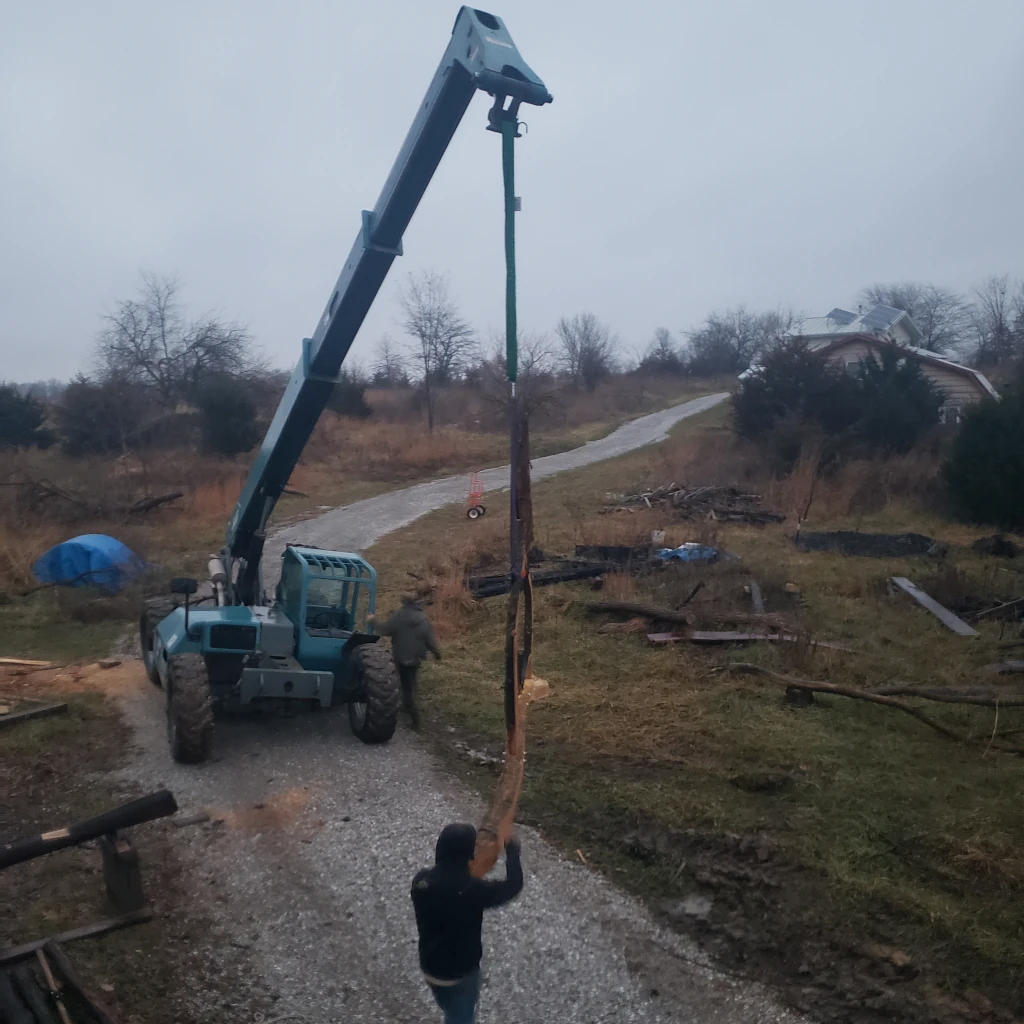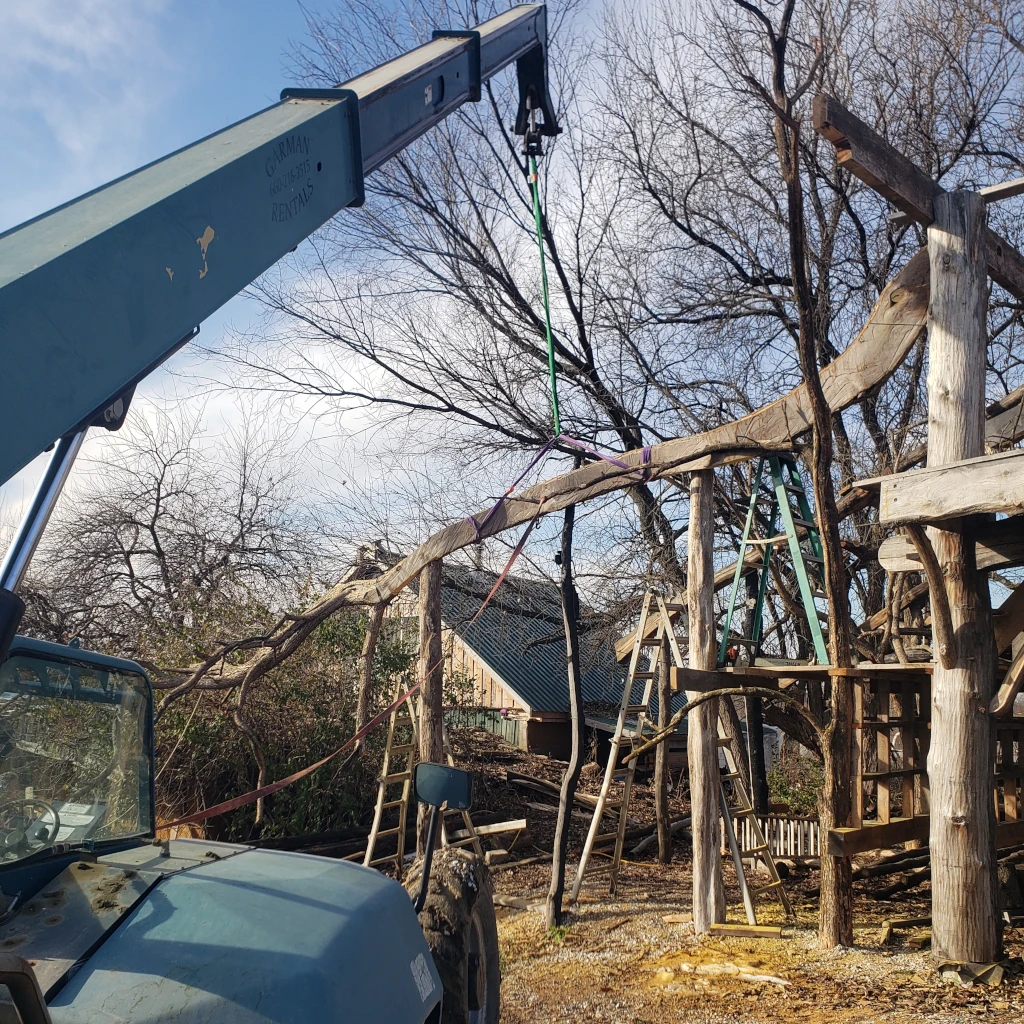The telescopic handler (a hydraulic lifting machine) lowered the rafter into place, like a giant hand setting down a pen. The finer cuts and fittings, Eric explained, would be done later with a chainsaw. This was just to hold everything in place.

Eric had seen me on the path, and asked me to help with the Critter Kitchen while they had the telehandler rented. When I told them I was going to get water at one point, Alis said, “Well, um, could you maybe not?” Eric offered me some of his. By such subtle social signals is a sense of urgency conveyed. I took a drink, and put my gloves back on.
Christina mentioned, in a previous post, that she had “asked for help” in taking care of Tango. I can assure everyone that from my point of view, having a canine to go on walks and talk or howl with is a net positive. Tonight will be his first night here.
In the same way, working with the Critters to raise the kitchen roof, even when it got dark and light rain started dancing into snow, I was thinking how fun it was to get to rope and swing such robotic weight, to put your hand near your head in a signal, boom out, down slow, and you’re playing this part in the skeletal, chaotic bloom of natural building. And whenever I am needed, especially if I am really needed, I’m always happy to help.

“I’ve noticed you jumping around in your latest posts,” my brother said when I visited. “More than usual.” There was a willow by the pond, and a bull dog that might take off after deer at any point. The first two people I’ve hosted at the ecovillage gave birth, around the time of that conversation, to babies named Willow. My mind was jumping around, language out of context, leaves blown into dendritic drifting. We saw a heron hunting fish.
Let me throw one more linguistic guide rope around this article to guide it into place, a little anecdote for the programmers out there. I only know enough about coding to be able to teach basic concepts to children online. Yet, due to the exigencies of partial employment, I’ve found myself spending enough time coding that it’s only natural to want to learn more, and become better at it myself. Sometimes the tree you cut down to build your life out of has an unexpected turn, and you change your plans accordingly, adapting and improvising in a way that robots can’t.
That’s how you know this was written by a human, and not a large language model. Robots don’t use metaphors, right?

“As data scientists, we often find ourselves needing to…” This was on a podcast called Talk Python to Me, and I was listening to it while working in a garden, and being included in that “we” induced strange feelings. It wasn’t an editorial we. It was an ad that included the listener, assuming they were a data scientist. I don’t like admitting to a strong emotional response to someone trying to sell me something, but I was flattered by the use of that second person plural, as it implied I was a professional, or at the very least employable, simply because of my evident interest in an admittedly niche aspect of a programming language.
If I say “we”, am I including you? Am I, from your point of view, one of “them” or “us”?
Should I go back to talking about the dog I’ll be sitting for? He’s got one brown eye and one blue, with pie slices transposed. His head, when he looks at you, is like a telescopic boom getting uncertain signals, tilting laterally, then back, jaw jerkily opening and closing. Tongue like a plumb line. Dropping a bone down by your feet.

Chad Hines, in addition to calling forth babies named Willow, has been a dedicated Tango-sitter for the Gil family, while they travel somewhere in the world each winter, and a regular writer for this newsletter.
